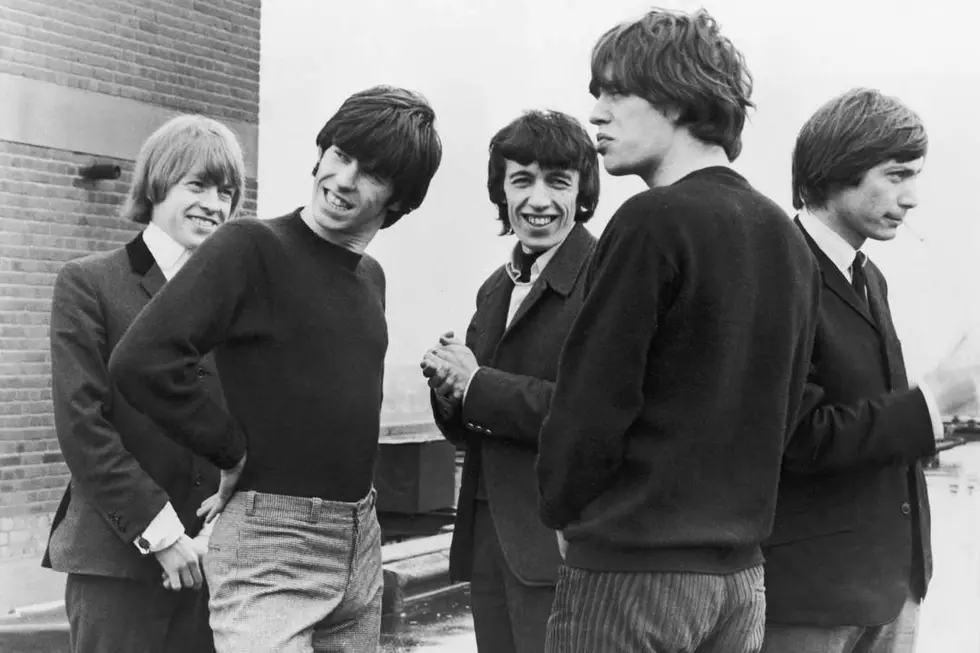
How the Rolling Stones Started to Find Their Voice on ’12 x 5′
Like the Beatles, the Rolling Stones weren't prepared for success in the U.S. And neither were their record companies.
Rushing to meet Beatlemania, Capitol Records scrambled to assemble new LPs out of the leftover songs that didn't make it to the U.S. albums. (Years later, with the introduction of the compact disc, the Beatles' U.K. and U.S. catalogs aligned, and all was right in the world ... until older fans realized that they really liked those bastardized versions.)
To a lesser extent, the Rolling Stones took a similar path with their albums; but to a greater extent, their reshuffled records actually improved some of the original LPs. Just as Meet the Beatles! is a better album than the corresponding With the Beatles, The Rolling Stones, Now! is a more satisfying listen than the band's second U.K. full length. Likewise, the Stones' second U.S. album, 12 x 5, charts a significant period in the group's evolution.
Using a five-song, Chicago-made U.K.-only EP that came out in August 1964, 5 x 5, as its launching point, 12 x 5 collected a dozen stray tracks from the period: five from the EP, two singles and their B-sides and three songs that showed up on the Stones' second U.K. album, The Rolling Stones No. 2, in January 1965. It's not a perfect album, but it set up a long string of classic LPs that stretched well into the next decade.
Unlike the Stones' U.S. debut, England's Newest Hit Makers, which was released five months earlier in May, 12 x 5 contained a number of group-penned songs: three credited to Mick Jagger and Keith Richards, and two to the band pseudonym Nanker Phelge. Unfortunately, none of them stand out (the U.S. debut included one Jagger-Richards composition, "Tell Me," an early classic).
Listen to the Rolling Stones' 'Around and Around'
But a few of the covers do. The Beatles filled their albums with familiar R&B songs from America that many times they equaled or bettered the original songs. The Stones' attempts at cuts like these often sagged under the weight of their idolizing; there's little to recommend in their covers of "Under the Boardwalk" and "Susie Q" on 12 x 5.
When they strayed from the Top 40 and into more obscure territory – like they do with "Time Is on My Side" (a non-charting number by Louisiana-born Irma Thomas) and "It's All Over Now" (written by Bobby Womack, whose group the Valentinos took it to No. 94 on the chart earlier in 1964) on 12 x 5 – the results are tremendous. (The version of "Time Is on My Side" included here is a different one than the more familiar single take, which includes a guitar solo rather than the organ fills heard on 12 x 5.)
And, even more important during this crucial stage, the Stones were starting to find their own voice. The Chuck Berry riffs are still abundant, so is Jagger's and Brian Jones' not-so-hidden adoration for veteran bluesmen. But there's a sharper sense of purpose to their playing on most of these songs, a self-assured grasp of the music that would only get stronger within the next couple of years. The first steps of the Stones' eventual domination begin here.
Over the next 12 months – and a No. 3 peak for 12 x 5 – the group would record some of its best and most popular songs from the first stage of its long career, culminating in Out of Our Heads, the Stones' first No. 1 album in the States. Even though the U.K. and U.S. albums received the same title for the first time, the stateside take shared only half of its dozen songs with the overseas version. It wouldn't be until 1967's Their Satanic Majesties Request that music fans on both sides of the Atlantic would hear the exact same albums – right around the same time, incidentally, that the Beatles finally lined up their catalog.
Rolling Stones Albums Ranked
More From Ultimate Classic Rock









